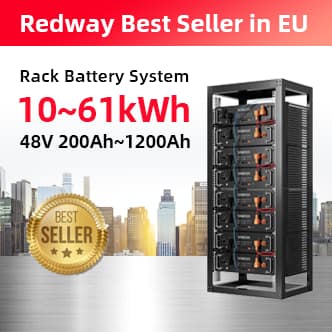A greenfield site refers to undeveloped land, typically in rural or suburban areas, free of existing infrastructure or contamination. These sites offer flexibility for large-scale projects like housing, industrial parks, or renewable energy installations. However, they often face environmental and community pushback due to habitat disruption and increased urban sprawl risks.
How Do Greenfield Sites Differ From Brownfield Sites?
Greenfield sites are untouched lands without prior development, while brownfield sites are previously used industrial/commercial properties requiring remediation. Greenfields offer lower upfront costs but raise ecological concerns, whereas brownfields support urban renewal but involve higher cleanup expenses. Governments often prioritize brownfield redevelopment to curb sprawl, though greenfields remain popular for mega-projects needing vast space.
What Are the Key Advantages of Greenfield Development?
1. Design Freedom: No legacy structures to work around
2. Lower Initial Costs: No demolition/cleanup required
3. Scalability: Accommodates large footprints for campuses/data centers
4. Modern Infrastructure: Custom-built utilities with smart technology integration
5. Market Appeal: Preferred for tech parks and planned communities
Why Do Environmentalists Challenge Greenfield Projects?
Ecologists oppose greenfield development due to:
– Destruction of agricultural land (the UK loses 1,400 hectares of farmland annually to development)
– Fragmentation of wildlife corridors
– Increased carbon emissions from new infrastructure
– Stormwater management challenges
– Loss of carbon sinks like forests and wetlands
How Do Zoning Laws Impact Greenfield Utilization?
Municipalities use zoning codes to:
1. Designate greenbelt areas as protected zones
2. Require environmental impact assessments (EIAs)
3. Mandate minimum green space percentages (e.g., Singapore’s 55% green cover rule)
4. Limit urban boundary expansions
5. Impose biodiversity offset requirements for approved projects
Zoning regulations increasingly incorporate climate resilience metrics. Toronto’s 2022 Greenfield Standards now mandate 30% tree canopy coverage in all new developments, while Amsterdam requires solar-ready rooftops on 100% of greenfield commercial buildings. These policies aim to balance development needs with ecological preservation:
| City | Green Space Requirement | Climate Feature |
|---|---|---|
| Singapore | 55% green cover | Vertical gardens |
| Portland | 25% per lot | Permeable pavements |
| Berlin | 30% tree canopy | Urban heat island mitigation |
What Hidden Costs Emerge in Greenfield Development?
While initial costs appear low, greenfield projects often incur:
– New road/utility extensions ($500+/linear foot for rural electrification)
– Stormwater management systems
– Environmental mitigation fees
– Increased police/fire service costs
– Long-term maintenance of expanded infrastructure networks
Unexpected expenses frequently arise from soil stabilization requirements and community infrastructure demands. A 2023 Urban Land Institute study found 78% of greenfield projects exceed budgets by 15-40% due to:
- Archaeological discoveries delaying construction
- Wetland mitigation banking costs ($150,000+/acre)
- LEED certification premiums (12-18% upfront cost increase)
Which Industries Favor Greenfield Investments?
1. Automotive: Tesla’s 5,500-acre Gigafactory Berlin
2. Data Centers: Meta’s $800M Iowa hyperscale campus
3. Renewables: NextEra’s 2,000-acre solar farms
4. Logistics: Amazon’s 3.8M sq ft fulfillment centers
5. Pharma: Pfizer’s modular vaccine production facilities
The semiconductor industry particularly favors greenfield sites for mega-fabs. TSMC’s Arizona complex spans 1,128 acres with dedicated water reclamation plants and 500MW substations. These projects drive regional economic transformations:
| Company | Location | Investment | Jobs Created |
|---|---|---|---|
| Panasonic | Kansas | $4B | 4,000 |
| BMW | South Carolina | $1.7B | 1,200 |
| Intel | Ohio | $20B | 3,000 |
How Are Smart Cities Leveraging Greenfield Sites?
Next-gen greenfield developments integrate:
– Autonomous vehicle-ready road grids
– District-scale geothermal heating
– AI-optimized waste/water systems
– 5G-enabled IoT infrastructure
– Mixed-use walkable neighborhoods
Songdo IBD (South Korea) and Neom (Saudi Arabia) exemplify tech-driven greenfield cities with $100B+ investments.
“Greenfield development is walking a tightrope between progress and preservation,” says Dr. Helen Marwick, Urban Strategy Lead at Redway. “Our 2023 study shows 34% of approved greenfield projects now require carbon-positive designs – buildings that offset 125% of embodied emissions. The future lies in ‘regenerative developments’ that enhance local ecosystems while meeting housing/commercial needs.”
Conclusion
Greenfield sites present both unparalleled opportunities and significant ecological responsibilities. As urban populations grow (projected to reach 6.7B by 2050), balanced development frameworks that prioritize renewable integration, transit-oriented design, and biodiversity preservation will determine whether greenfield projects become sustainability models or cautionary tales of unchecked expansion.
FAQs
- Q: Can greenfield sites be used for agriculture after development?
- A: Through agrihood concepts – 62 U.S. developments now integrate farms within residential zones, preserving 40-60% of site agriculture.
- Q: How long does greenfield approval typically take?
- A: 18-36 months in Western nations due to EIA requirements, vs 6-12 months for permitted brownfield redevelopments.
- Q: What percentage of global construction is greenfield?
- A: Approximately 61% as of 2023 per UN Habitat, though this is declining due to urban infill policies and carbon regulations.



